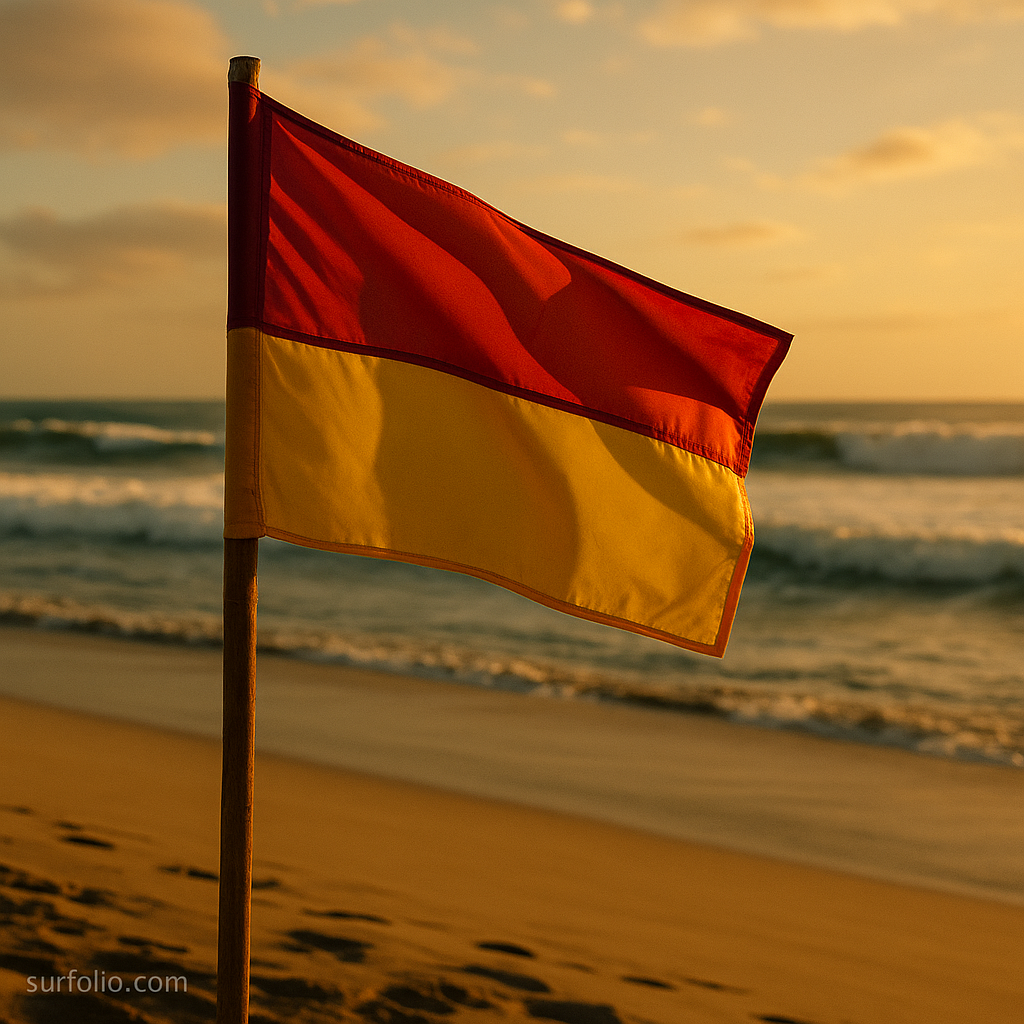
When you arrive at a new beach, it’s easy to focus on the waves — but knowing what the beach flags mean can be just as important as your board choice. Lifeguards use a universal system of colors and symbols to communicate surf conditions, hazards, and safe swimming areas. Understanding these signals isn’t just about following rules; it’s about respecting the ocean, keeping yourself safe, and setting an example for others in the lineup.
Here’s your guide to reading beach flags and surf safety signals so you can paddle out with confidence and awareness.
The Basics of the Beach Flag System
Beach flags are a visual language between lifeguards and beachgoers. Their purpose is to communicate real-time ocean conditions, hazards, and permitted zones. Depending on the country or beach, flag systems can vary slightly, but most follow international standards used by coastal safety organizations like the International Lifesaving Federation (ILS).
Flags are often placed along the beach at designated lifeguard stations, with each color representing a specific level of risk or restriction.
Understanding the Main Flag Colors
Red Flag – High Hazard
A single red flag means dangerous surf or strong currents. Swimming and surfing are not advised unless you’re highly experienced and the lifeguards permit it. Expect powerful shore breaks or strong rips that can easily overpower weaker swimmers.
Double Red Flag – Beach Closed
When two red flags are flown together, the beach is officially closed. This means no swimming or surfing is allowed, usually due to extreme surf, storms, or unsafe water quality.
Yellow Flag – Moderate Hazard
A yellow flag indicates moderate surf and currents. It’s safe for confident swimmers and surfers, but caution is still needed. The waves might look mellow, but undertows and side currents can make conditions unpredictable.
Green Flag – Low Hazard
The green flag means calm conditions and low surf risk — but that doesn’t mean zero risk. Always stay aware of your surroundings, as ocean conditions can change quickly.
Red and Yellow Flag – Patrolled Area (Swim Between Them)
These twin flags mark the area monitored by lifeguards. It’s the safest zone for swimming or bodyboarding, though not always ideal for surfing. Respect these areas — they exist to keep both swimmers and surfers safe.
Purple or Blue Flag – Marine Life Hazard
This flag warns of potentially dangerous marine life such as jellyfish, stingrays, or even sharks spotted nearby. Proceed with caution and follow any announcements from lifeguards before entering the water.
Additional Safety and Surf-Specific Signals
Beyond color-coded flags, lifeguards may use additional flags and markers to define specific areas or activities.
- Black and White (Checkered) Flags: Indicate zones for surfboards or bodyboards only — swimming is not allowed here. These are your green light as a surfer.
- Red Flag with a Diagonal Line or Symbol: May signify that the beach is closed to watercraft or surfboards.
- Yellow Triangle Flag: Used in some regions to mark mixed-use zones where both swimmers and surfers are allowed but must coexist respectfully.
- Orange Windsock: Indicates strong offshore or cross-shore winds — a heads-up for surfers using lighter boards.
In Australia, the UK, and other countries with strong surf cultures, these flags are standardized to ensure clarity across beaches.
Lifeguard Whistles and Hand Signals
Flags aren’t the only way lifeguards communicate. Whistle blasts and gestures can indicate important warnings:
- One long whistle: Get out of the water immediately — danger or closure.
- Two short whistles: Attention needed — often directed at a specific individual.
- Raised arm or pointing gesture: Lifeguard signaling a change in area or requesting awareness of a nearby hazard.
If you’re unsure what a signal means, always paddle closer to shore or check in with a lifeguard before continuing your session.
Reading Ocean Conditions Beyond the Flags
While flags provide structured information, every surfer should also learn to read the ocean independently. Look for:
- Rip currents (channels of darker, fast-moving water).
- Changes in wave breaking patterns that indicate sandbanks or reefs.
- Shifting tides that alter current strength throughout the day.
Beach flags give you the broad overview, but your awareness fills in the details.
Surf Etiquette and Shared Responsibility
Understanding beach signals isn’t just about personal safety — it’s about being a responsible part of the surf community. Surfers often set the tone for others in the water, especially when lifeguards are monitoring busy beaches.
Follow these golden rules:
- Never surf inside flagged swim zones.
- If lifeguards close an area, respect it — they know conditions better than anyone.
- Educate visiting surfers or tourists who might not understand local flag meanings.
- Lead by example — safe surfing earns respect from the entire beach community.
Global Differences to Know
While the general colors are universal, there are slight variations across regions:
- Australia: Red and yellow flags mark lifeguard-patrolled areas; black and white flags mark surf zones.
- Europe: Uses the same base colors but often adds symbols for clarity.
- U.S. Beaches: Similar system, though enforcement can vary by state or municipality.
If you’re surfing internationally, take 30 seconds to check the local signage — most lifeguard towers display flag explanations right at the beach entrance.
Final Thoughts
Beach flags and safety signals aren’t just for tourists — they’re tools for everyone who loves the ocean. Understanding them shows respect for the sea, the lifeguards protecting it, and your fellow surfers sharing the lineup.
Before every session, take a quick look at the flags fluttering in the wind. They might not look as thrilling as the waves beyond them, but they’re your first connection to ocean awareness — and the first step toward a safe, confident, and respectful surf experience.
